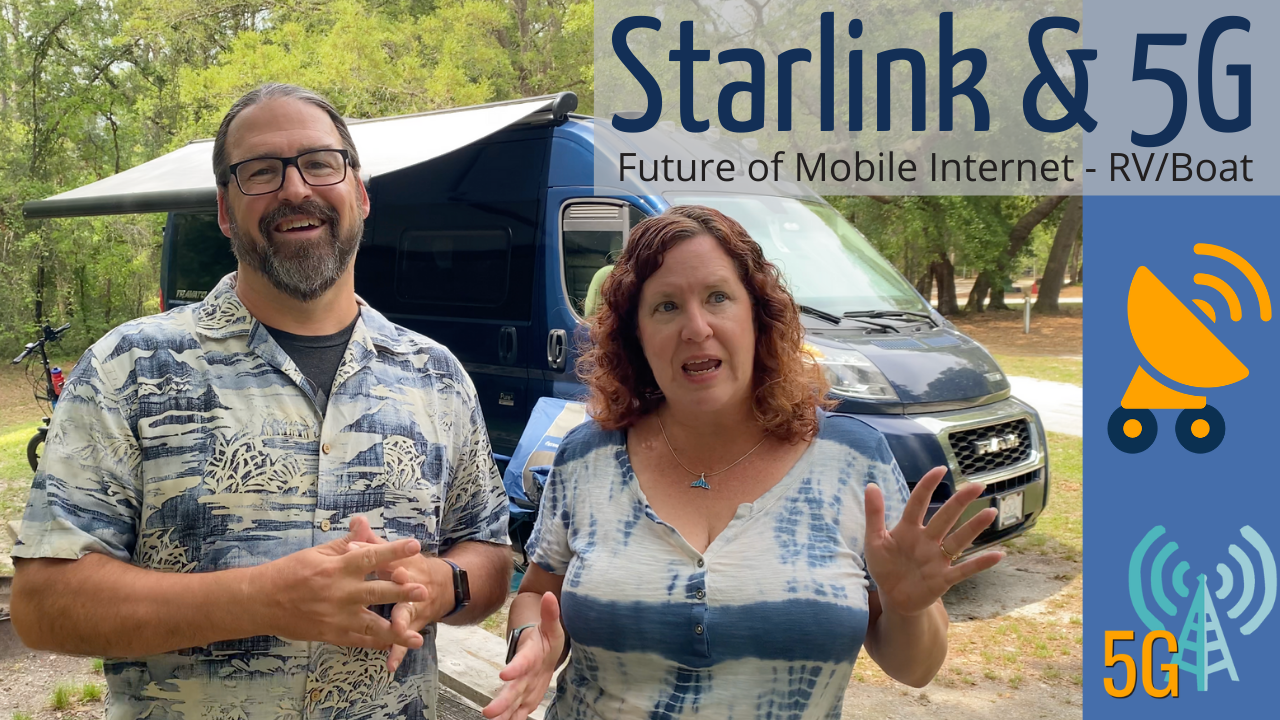
The internet is all abuzz about Starlink satellite internet and 5G cellular.
Will these two emerging new technologies live up to the hype as a mobile internet solution for RVers and boaters?
As part of our day job over at the Mobile Internet Resource Center we’ve been closely tracking both 5G and Starlink for years. We actually published our first Starlink story over six year ago, long before SpaceX had even managed to successfully land a rocket!
The past few years have been a whirlwind of technological advancement – and Starlink has gone from being “pie in the sky” to well over a thousand launched satellites and tens thousand active beta testers.
And 5G has gone from being marketing hype to a standard feature on all the newest smartphones.
We get asked all the time – are we excited about all this new tech?
Will either fundamentally change the way that technomads keep connected?
So in a rare cross-over post into our personal space here at Technomadia, we’re going to address these two topics that we’re so frequently asked about.
But first, a quick explanation of just what makes these two technologies special:
Starlink – Most current satellite internet options rely on geostationary satellites orbiting 22,000 miles above the equator, sitting in an apparent fixed point in the sky. SpaceX’s Starlink instead utilizes a constellation of low-earth-orbit (LEO) satellites that are orbiting MUCH closer to the ground – and because of this they are better suited to providing high-speed and low-latency connections more comparable to residential cable internet. The catch with LEO constellations is that it takes a LOT more satellites to provide coverage, since each satellites is only in view for a brief period before zooming past overhead. And it takes extremely advanced antenna technology to lock onto and track so many satellites that are in constant motion. Starlink has been in public beta since October 2020, with equipment priced at $499 and unlimited data service costing just $99/mo.
5G – 5G is shorthand for “fifth generation” cellular technology, just as 4G that dominated the last decade was the the “fourth generation”. 5G will eventually allow for much faster peak cellular speeds, substantially lower network latency, and far more capacity to allow for more connected devices and massive amounts of data usage. 5G builds on the foundation of 4G, and paves the way for the next decade of cellular evolution.
If you’d like a more general overview of these two technologies and how they stack up for mobile travelers, head on over to the Xscaper’s Blog, where they just published an article by us on the topic:
Xscaper’s Blog: 5G & Starlink- Emerging Mobile Internet Technologies
Are We Excited?
We’re technology enabled nomads, and no doubt, these two technologies are keeping us super excited. We love geeking out over this stuff!
So we filmed a new video on our Technomadia YouTube channel, talking about Starlink and 5G and how we see them fitting into our personal mobile internet arsenals in the years to come:
Starlink – Will It Replace our Cellular Based Internet?
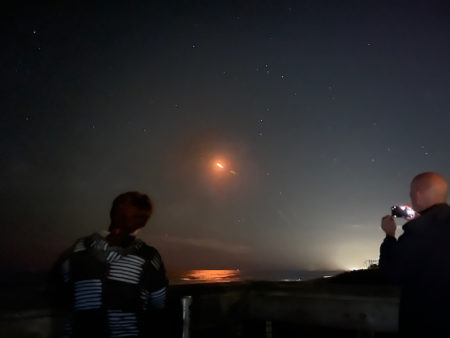
Chris hangs on Elon’s every tweet, is part of several Reddit and Facebook groups where the technology is dissected and analyzed, reads just about every article that comes out, and spends way too much time digesting Starlink FCC filings.
As space and mobile internet geeks, this stuff lights us up.
We’ve been home-based in Sanford, FL for much of the past year due to the pandemic, and getting up (even in the middle of the night!) to watch every Starlink launch has been part of the joy of our time in Florida.
There’s a heck of a lot to be excited about with Starlink.
But we’re also realists. We balance our excitement over new stuff with our deep understanding of the challenges that come with all new technologies.
And even though we’re hearing many in RVing and boating forums & groups exclaim that Starlink will soon be their one-and-only mobile internet solution – we don’t feel that will be the case for many nomads.
Here are the specific reasons why Starlink won’t be our primary way online anytime soon:
Size
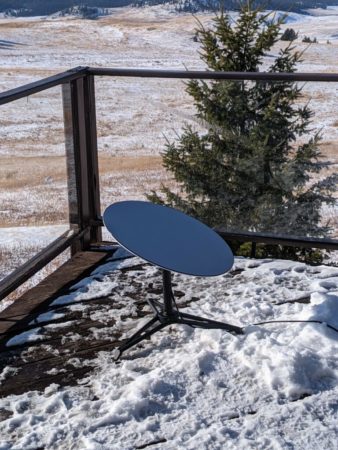
The Starlink dish is over 2 feet in diameter. It is definitely not nearly as cumbersome as the HughesNet dish that we used to own, and that has been a staple for satellite internet dependent RVers for years.
But it’s still big.
And while there will likely be mobile mounting systems for RVs and boats, we split our travels between three different vessels – each presenting unique considerations in how we travel in them.
Van
Our conversion van is our ‘side trip’ explorer from our boat or motorhome, and our shuttle craft in-between.
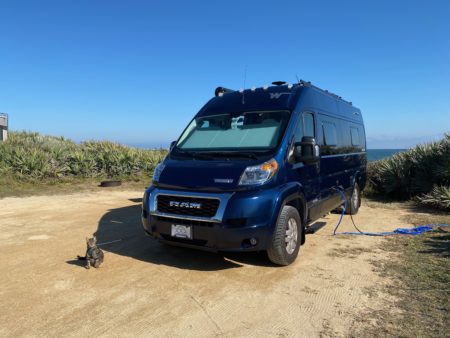 Mounting on our roof isn’t practical, it is already crowded with solar, AC and vents. And storing the Dishy inside our van just isn’t going to happen for most of our trips.
Mounting on our roof isn’t practical, it is already crowded with solar, AC and vents. And storing the Dishy inside our van just isn’t going to happen for most of our trips.
Especially since Starlink won’t actually work everywhere we would want to take our van (more on that later) – we just can’t see wanting to devote so much precious storage space to van camping with it. But we’ll probably have to from time to time for testing purposes.
Boat
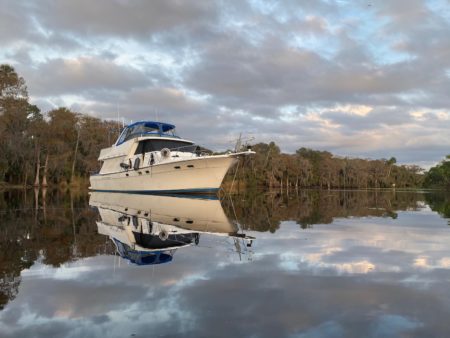 Though Starlink is becoming increasingly portable, the system currently still requires a stable foundation and it will shut down if any considerable motion is detected. This means that Starlink on a boat (even rocking gently at a dock) is not yet a practical option.
Though Starlink is becoming increasingly portable, the system currently still requires a stable foundation and it will shut down if any considerable motion is detected. This means that Starlink on a boat (even rocking gently at a dock) is not yet a practical option.
Maybe once they have boat specific mounting equipment to compensate for the motion, if it’s reasonably priced, we’ll consider Starlink for when we’re cruising.
Bus / RV Lot
We intend to spend winters out in the deserts of the southwest in our vintage bus conversion – and this is where Starlink might make sense for us most.
We have the storage space to carry it to sweet boondocking spots, and it may actually be practical at our RV Lot in Benson, AZ where cellular signal can be a bit sluggish in wintertime.
But for use a few months out of the year, would it be worth the equipment expense and space if we didn’t already need it for testing anyway?
Coverage
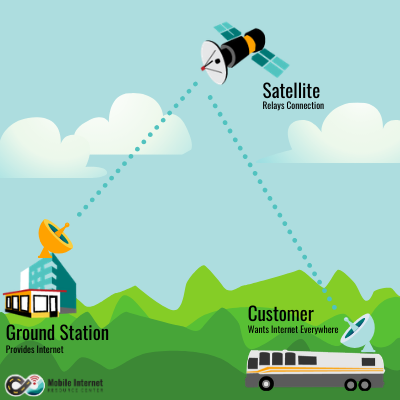 The key advantage of satellite internet is that you can get connected far from any cell towers or Wi-Fi options.
The key advantage of satellite internet is that you can get connected far from any cell towers or Wi-Fi options.
But with Starlink, there are still coverage concerns to keep in mind.
Starlink is currently dependent upon ground stations, which is where the actual internet connection comes from. The satellites are just relaying the connection from your location, to a ground station, to the internet, and then back.
So any Starlink satellite passing overhead needs to both see you and a ground station to work. And the ground station needs a big honking connection to the internet to handle the demands of all the users on all the satellites in range that it is currently controlling.
By the nature of Starlink orbits – northern latitudes have more satellites passing overhead than southern latitudes. So during the Starlink beta, SpaceX has focused offering service in the northern half of the United States first.
Every month Starlink coverage pushes further south, and more satellites and ground stations are deployed. But it will still take a while before Starlink coverage is truly nationwide, although they are quite aggressive in their projections of having at least minimal nationwide coverage by end of this year.
And SpaceX will need in the future to launch a more advanced generation of satellites equipped with laser relays to offer service over oceans and to other places outside the reach of ground stations.
Starlink is evolving rapidly – but (especially for open water cruising) it will take a while before all the pieces fall into place to be able to offer service for all who want it.
Congestion & Capacity Issues
Starlink is not meant to replace home internet connections in more urban and suburban areas where cable & DSL are already serving that purpose.
And in fact, Starlink really can’t compete in some areas. Because congestion will still be an issue.
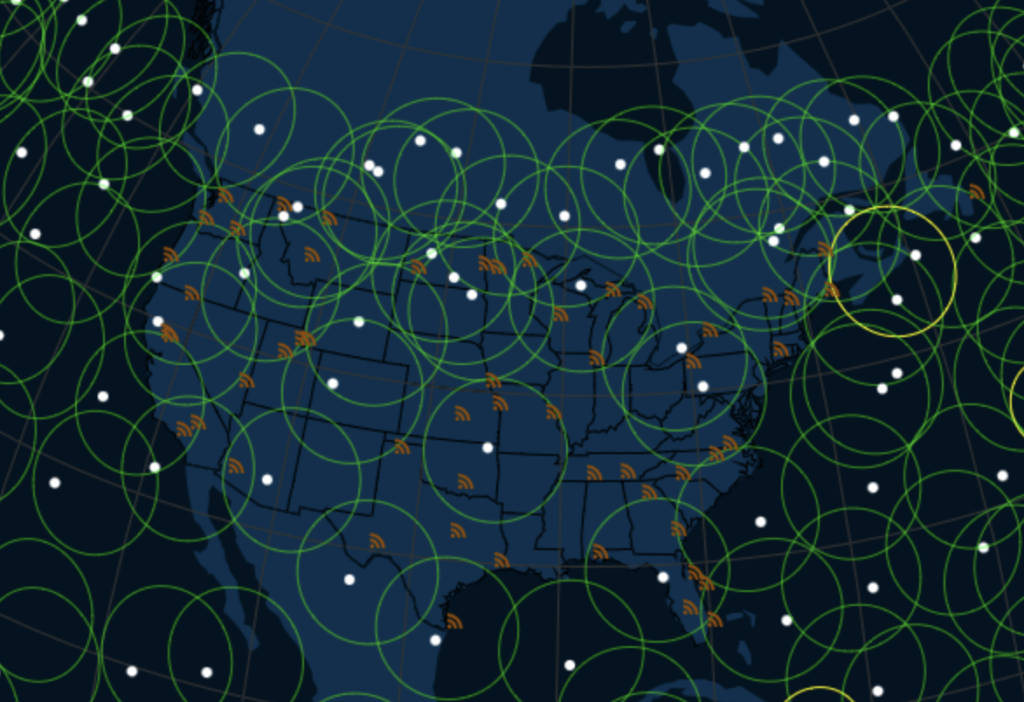
If you think of each Starlink satellite as a cell tower in space, you should realize that just like on earth – each satellite and ground station can only handle so much traffic before getting overloaded.
So just like a cellular tower will have slower speeds as more people are using them (ever been to Quartzsite in mid-January?), Starlink will suffer the same fate when there’s more users than capacity is available in a satellite’s cell.
 Already, many new Starlink customers trying to sign up to join the beta in areas where there is service are being told that their area is already “at capacity” – and in some cases customers are being told that they might not be eligible for service “until late 2022” when more satellites have been deployed.
Already, many new Starlink customers trying to sign up to join the beta in areas where there is service are being told that their area is already “at capacity” – and in some cases customers are being told that they might not be eligible for service “until late 2022” when more satellites have been deployed.
Once Starlink has basic global coverage, they intend to launch more satellites and install more ground stations to increase capacity.
And they will have to balance the desires of mobile users wanting to travel into congested areas where there might already be a long waiting list for residential service.
Will mobile users be blocked from connecting in these overloaded areas?
Ultimately Starlink’s super affordable $99/mo unlimited service plan may be reserved for fixed residential service only, and truly mobile setups may end up needing to pay a higher price to keep capacity reserved for transient users.
But until SpaceX works out the details on how mobility will work and be priced – nomads using Starlink run the risk of trying to set up in an area where the network just won’t let them online.
Line of Sight
The next big concern is the amount of clear open sky that Starlink requires to keep a consistent connection.
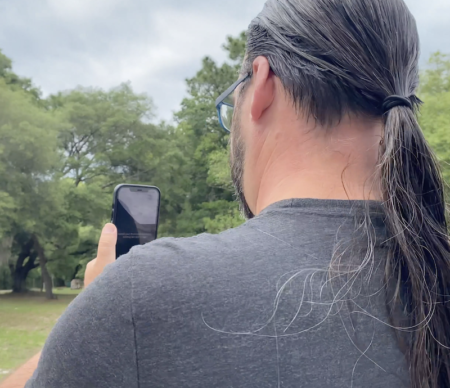
With geostationary satellites like HugheNet or even a satellite TV service like Dish or DirectTV, you only need to aim the satellite to a fixed location in the southern sky – and as long as you aim carefully you can even get connected through just a tiny gap in the trees.
Starlink satellites on the other hand are in constant motion, passing rapidly overhead from horizon to horizon. This means that you need a huge wide open view of the (primarily northern) sky to keep a solid connection.
Even just a small tree branch or building or anyone getting in the way can cause a momentary interruption in the satellite link, knocking you briefly offline.
If you are OK with occasional drops, this might not be such a big deal. But if you spend your days on Zoom, Starlink will really demand that you park only in wide open places.
And we LOVE parking nestled deep amongst trees!
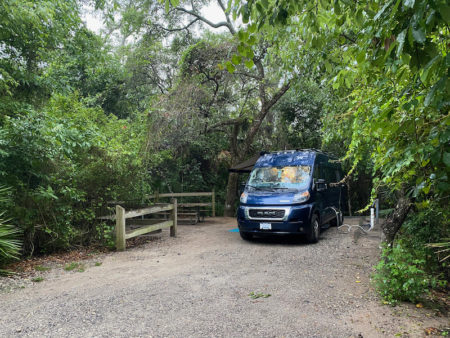
In the campground we filmed the above video at near Ocala, Florida with lots of trees around, we only found one small 10×10 foot space – in the ENTIRE campground – where Starlink’s app indicated we’d get a completely consistent connection.
The rest of the campground? No dice.
We personally like variety in the places we stay, and love camping amongst a blanket of forest.
Eventually as more Starlink satellites come online the system will become able to fail over to a backup satellite when a primary is blocked.
But as for parking in the deep forest – that is going to remain a major challenge for Starlink.
Power Consumption
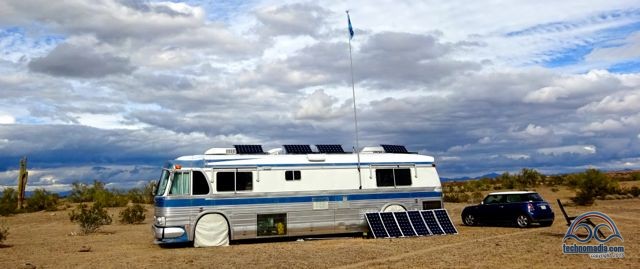
So fine you say – you’ll just camp in places without trees or buildings or other blocking terrain. Perhaps you’re an off-grid boondocker who likes mostly desert camping anyway, and you never visit places with trees.
Well, your new problem is the amount of power that Starlink consumes – with a 100 watt continuous draw while the system is powered on for the initial beta units (update: seems newer units shipping in May 2021 with a grey stand are using about 1/3 less power – great to see improvements here!). That’s twice as much power as it takes to run an RV-sized DC compressor fridge. And since Starlink requires AC power and keeping an inverter powered on – the overall power demands are similar to a full-size residential fridge in an RV.
Starlink will use much more power than a laptop. And certainly much more than most any cellular based mobile internet setup, even if running a booster.
That’s a lot of power to supply either by battery, solar or generator. And if you need things online 24/7, that’s 1500-2,400 watt hours of power to collect and store.
For those already with massive solar and battery setups with excess capacity to spare, this may not be a concern.
But for many already struggling to get through a shorter winter day, expanding your solar setup may or may not be feasible – especially if adding a dish to your roof reduces the space you have for solar!
But – We are Excited!
Don’t get us wrong – we ARE excited about Starlink.
We just personally feel that Starlink will be a component of a mobile internet setup for most (especially for us), not a replacement for cellular.
Even if Starlink can be your primary way online, you’ll still want to build in some cellular or Wi-Fi redundancy for those times when you’re somewhere you can’t get a clear line of site, or if you’re in a congested market.
While our team over at the Mobile Internet Resource Center has had a Starlink dish in for testing for months – we are anxiously awaiting the beta to inch southward towards our locations in Florida or Arizona (if we end up there this year) so we can get some hands on time ourselves.
To track our ongoing coverage of Starlink and the other competing LEO constellations (OneWeb and Amazon’s Project Kuiper are also racing to space):
5G Celluar
While satellites are literally launching into space, cellular technology is also advancing at a rapid pace.

While this next evolution of technology has been rolling out for a couple of years now, it really went mainstream when flagship smartphones (like the iPhone 12) started shipping with 5G last year
5G is a complicated topic however, and right now the carriers are just getting started with laying the foundation for what 5G eventually be. These are still early days – just like 4G/LTE was at the start of the 2010s is vastly different than where 4G has evolved to today.
5G sets the stage for the next decade of cellular evolution and advancement, and at the moment 5G outside of core urban areas is still just getting started – delivering a 5G experience that is just ‘really good LTE’ right now.
There’s a lot of confusion still remaining in the market too, as there are actually 3 ‘flavors’ of 5G – and the mmWave short range spectrum gets a lot of the attention.
This is the 5G that is super ultra wicked fast, but can only broadcast a very short distance from the sending antenna. This is not the 5G that will benefit most of us nomads traveling outside of core urban areas.
5G is also being deployed over mid and low range spectrums, reaching distant rural places just like 4G does now – just not at quite the speeds capable with mmWave.
With 5G compatible smartphones, mobile hotspots, routers and antennas on the market now (and cellular booster manufactures issuing confusing ‘5G compatible’ statements – they’re only marginally so) – we’re constantly fielding questions on how to assemble a mobile internet arsenal around a 5G future.
At present time, we’re advising that there should be no hesitation in acquiring consumer level 5G products like smartphones and tablets if you’re due for an upgrade. Many consumers tend to replace those devices every couple of years anyway.
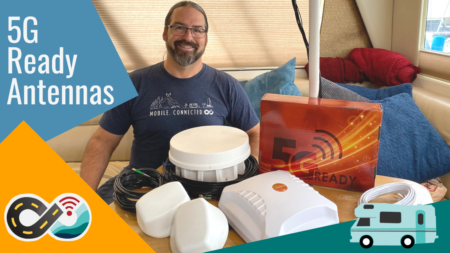
But when it comes to the more core elements of a mobile internet setup – we’re still leaning our audience towards optimizing for advanced LTE technology for now in their router and hotspot selections.
5G equipment simply has a steeper price point and will be obsolete in just a year or two as the next evolution in 5G rolls out. And many more options will be coming to market in the years to come at lower pricing.
Meanwhile, 4G LTE is here to stay as a staple to depend on for many years to come – and is already at peak advancement.
If you do want to future proof any component of your cellular setup, consider one of the many 5G compatible antennas for router use that are on the market to cover the future bands that will be used.
While we’re professionally playing around with 5G hotspots and routers already, our personal mobile internet setup that we depend on day to day is still mostly the same as it was last year:
A dual LTE modem Pepwave Max Transit Duo with MIMO antennas.
You can view our personal setup here: Technomadia’s Mobile Internet Setup
To learn more about 5G and keep up with is rapidly evolving topic:
Hit the Road RV Summit – Mobile Internet Discussion Panel
 Want to geek out even more on mobile internet stuff? Then you’re in luck – you can join us FREE for this weekend’s Hit the Road RV Summit hosted by our friends Marc & Julie of RV Love.
Want to geek out even more on mobile internet stuff? Then you’re in luck – you can join us FREE for this weekend’s Hit the Road RV Summit hosted by our friends Marc & Julie of RV Love.
The summit this year has 30 expert speakers on a variety of RVing topics. Discover how to find the best camping destinations, rent or buy an RV, tackle RV maintenance and repairs, work from the road, get tips for improving your RV lifestyle and save money along the way.
And we’ll of course be covering mobile internet options.
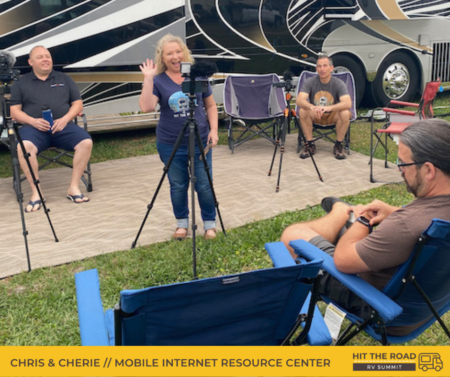
We’re particularly excited as we were able to film our session in person recently as they and mutual friends Erik, Kala & Bradley (Livin Lite) were passing through Florida. Erik is also a colleague of ours running the popular mobile internet retailer shop MobileMustHave.com (our members get a nice discount with them).
So we decided to spend some of our time together doing something different – we teamed up with Erik for an interactive panel discussion on connectivity options for RVers, and the future of mobile internet. Three mobile internet gurus in one session!
Our session should be broadcasting around 6:30p Eastern on Saturday April 24 – and will be free for a day.
The summit is free to attend the day of the broadcasts, and optional VIP passes are available for lifetime access to view the content anytime (this is an affiliate link).

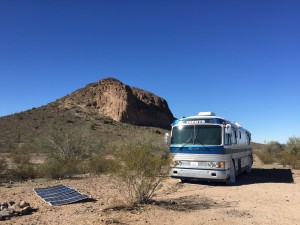
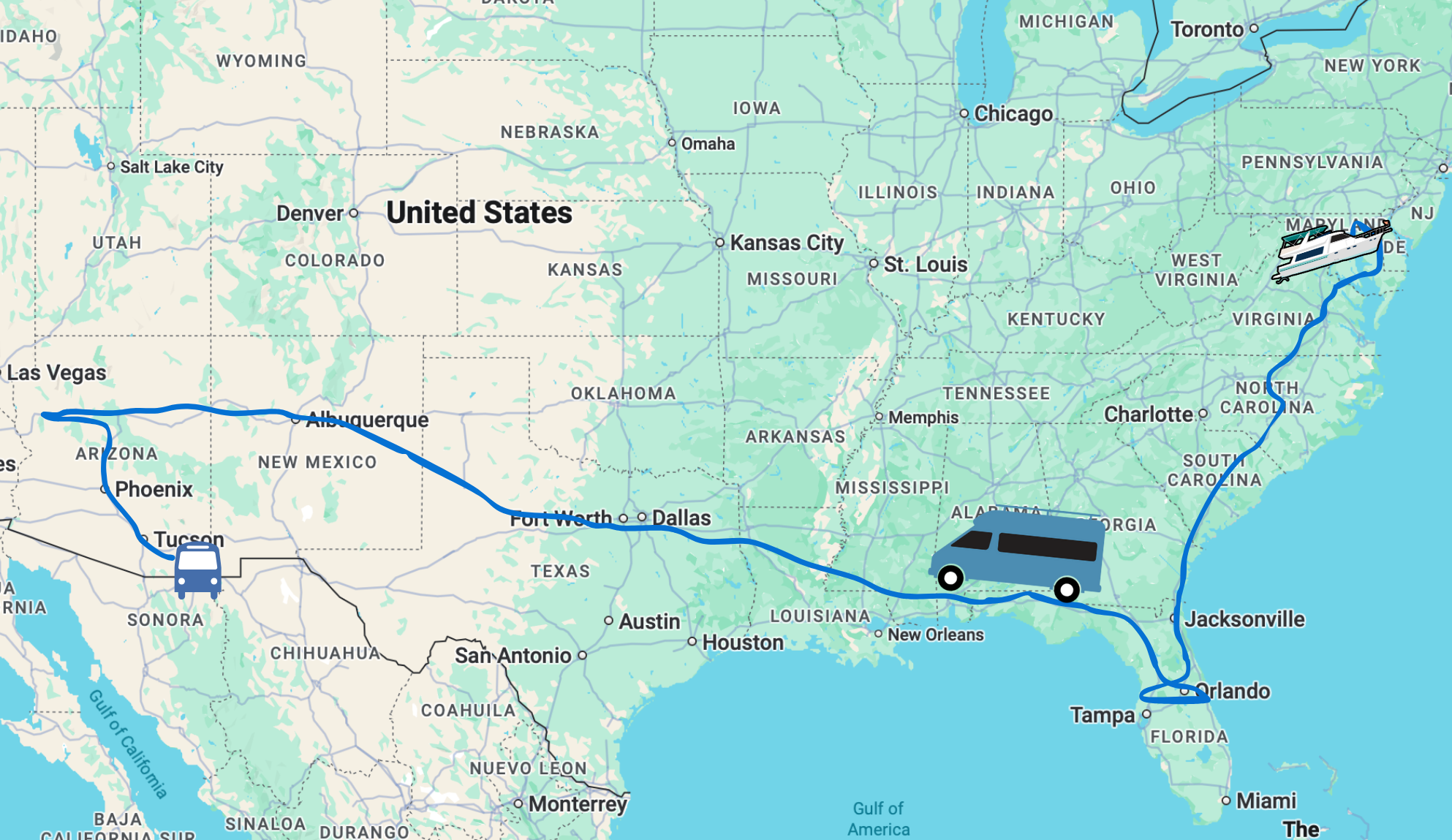
This is one of the best explanations of the pros and cons of LEO satellite constellations that i have read. Thank you for being realists. Any thoughts on issues with rain fade as is seen in satellite TV?
Satellite internet systems might get slower in extremely heavy rain – but in general they should be able to handle pretty much any weather.
That’s awesome that you’ve been watching the launches.
I saw the “diamond string” shoot across the sky one night here in Wisconsin after the sats deployed (confirmed a launch had happened earlier).
We’re waiting for our dish. Starlink said we’ll get it the 2nd half of this year but there are neighbors with it already and giving their Internet very good reviews in the local paper here.
I’m surprised you didn’t mention fixed cell. Starlink’s FAQ makes it sound like they won’t be doing mobile dishes, at least for the Beta.
“Your Starlink is assigned to a single cell. If you move your Starlink outside of its assigned cell, a satellite will not be scheduled to serve your Starlink and you will not receive internet. This is constrained by geometry and is not arbitrary geofencing.” https://www.starlink.com/faq
Service is currently restricted to your service address cell, but earlier this month they enabled the ability to change your own address to move service:
https://www.rvmobileinternet.com/starlink-enables-easy-service-address-changes-one-step-closer-to-being-rv-nomad-friendly/
Thank you for this informative breakdown of Starlink and 5G!
Had this starlight for a bit. Not good enough to quit other options, but if they get those guys in the air as the ETA says…It will be magical in this remote cabin!